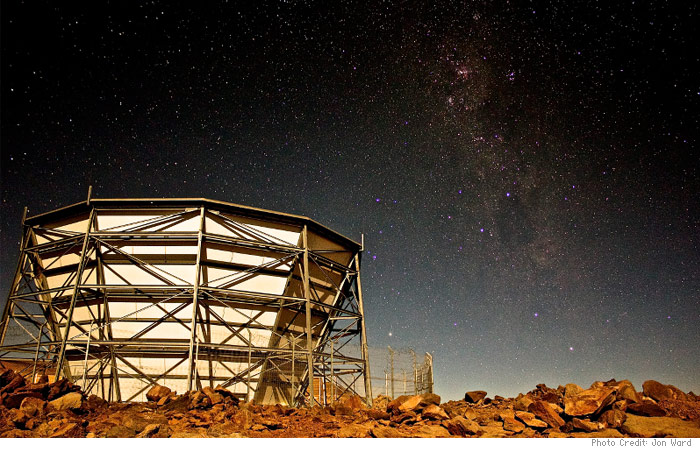

Atacama Cosmology Telescope (ACT)The Atacama Cosmology Telescope (ACT) is a six-meter diameter telescope on Cerro Toco in the Atacama Desert of northern Chile (image above by Jon Ward). It is designed to make high-resolution measurements of the cosmic microwave background (CMB) temperature and polarization anisotropies and detect massive galaxy clusters via the thermal Sunyaev Zel'dovich (tSZ) effect. Reconstruction of the CMB lensing potential will play a key role in the cosmological detection of neutrino mass, and measuring the imprint of primordial gravitational waves in B-mode polarization could provide unique insights into the early universe and quantum nature of gravity. ACTViewerACTViewer is a tool developed by the ACT team that provides a visualization of the ACT DR5 (and ACT+Planck) skymaps. Different combinations of data can be interactively viewed. A copy of the tool is hosted on LAMBDA. MBACA first-generation receiver, the Millimeter Bolometric Array Camera (MBAC), mapped the CMB temperature anisotropies over an area of around 1000 square degrees from 2008 to 2010 with spectral bands centered at 148, 218 and 270 GHz and an angular resolution of 1.4 arcminutes at 148 GHz. Science highlights from these observations include:
ACTPolThe second-generation, polarization-sensitive receiver ACTPol observed between 2013 and 2016. The four-year survey consists of 17,000 square degrees of the sky mapped at 98 and 150 GHz, with the deepest 600 square degrees at a noise < 10 uK-arcmin. This camera implemented multi-chroic polarization sensitive detectors operating at 100 mK. Highlights from the two data releases (DRs) include: DR3
DR4
DR5
AdvACTThe third generation Advanced ACTPol receiver extended the frequency coverage down to 20 GHz and has been surveying 40% of the sky since 2016. For more information about ACT and latest news see, https://act.princeton.edu/ |


